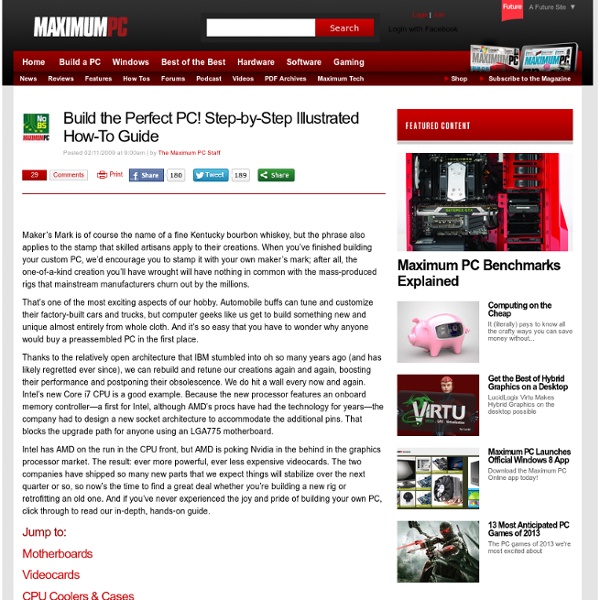Build the Perfect PC! Step-by-Step Illustrated How-To Guide

Computer Repair with Diagnostic Flowcharts - Troubleshooting Del
Eight of the troubleshooting flowcharts for PC hardware from my book "Computer Repair with Diagnostic Flowcharts Third Edition" are excerpted on this site and linked below. The non-active links are for charts that are included in the book but not available online. The Third Edition is 170 pages and includes seventeen flowcharts for troubleshooting PCs plus explanatory text for every decision symbol on every flowchart. The troubleshooting process is the same for an expensive Sony or IBM, or a cheaper eMachines or Acer. The PDF eBook is available for instant download or the paperback book can ordered from Amazon for $19.95, or from Amazon UK for £13.95 or through any retail store by the title "Computer Repair with Diagnostic Flowcharts Third Edition" or ISBN 0972380183. Boot Failure Troubleshooting Poster ( 30" x 30" printable PDF). The PC diagnostics apply to ATX computers, which displaced the old AT standard beginning in the mid-90's.
How to Build a Kick-ass $800 Gaming PC - Page 2
1. Mount the Power Supply Traditionally, the PSU is mounted at the top of the case. But in this instance, the Antec Three Hundred case reserved room for the power supply at the bottom. 2. You may have thought with the end of CPU pins that installing your processor was safe and worry-free. The next step is to unlatch the metal arm next to the socket and lift the retention plate. With the CPU in place, it’s time to attach the heatsink. 3. The retail version of our CPU comes with a stock Intel cooler. First, make sure that you remove any protective film from the cooler’s thermal grease. Once all four legs are locked, you can flip the motherboard over and you should see all four legs sticking out slightly from the bottom. After the cooler is safely fastened to the motherboard, plug the fan’s four-pin power cable into the corresponding four-pin header on the motherboard—typically it’s near the socket.
Related:
Related:



